The Renaissance era, a kaleidoscope of creativity and intellectual prowess, beckons us to explore its 16 famous renaissance paintings that are not just brushstrokes on canvas but vibrant portals to a world of stories, myths, and human expression. Buckle up for a delightful journey through these great masterpieces, where each stroke narrates a tale, and every canvas whispers secrets of an era that embraced the human spirit like never before.
1. Miracle of the Cross at the Bridge of San Lorenzo by Gentile Bellini

| Completed Year | 1500 |
| Dimensions | 30 x 66 inches |
| Location | Gallerie dell’Accademia, Venice |
Gentile Bellini transports us to the heart of Venetian wonder with the “Miracle of the Cross.” The meticulous details in the expressions of onlookers were Bellini’s way of capturing the Venetian awe—like witnessing the first-ever Venetian Carnival.
2. Perseus Freeing Andromeda by Piero di Cosimo

| Completed Year | 1513-1515 |
| Dimensions | 70 x 123 inches |
| Location | Uffizi Gallery, Florence, Italy |
Piero di Cosimo was the well-known Italian artist of 15th century. He invites us to a grand mythological spectacle with “Perseus Freeing Andromeda.” Amid the heroic grandeur, take a closer look at the background. Those whimsical creatures frolicking in the distant waves are a playful nod to the artist’s love for blending fantasy into the classical narrative.
3. An Old Man and His Grandson by Domenico Ghirlandaio

| Completed Year | 1490 |
| Dimensions | 62 x 46 inches |
| Location | Louvre Museum, Paris |
In “An Old Man and His Grandson,” Domenico Ghirlandaio pulls at our heartstrings with a tender portrayal. The meticulous rendering of the old man’s aged hands is more than just artistic flair. Ghirlandaio’s attention to detail was so profound that he could capture not just a moment but an entire lifetime in the wrinkles of a hand.
4. The Portinari Altarpiece by Hugo van der Goes

| Completed Year | 1475-1476 |
| Dimensions | 8’3″ x 10’2″ |
| Location | Uffizi Gallery, Florence |
Hugo van der Goes transforms an altarpiece into a visual feast in “The Portinari Altarpiece.” As your eyes dance across the canvas, you will notice that those angels in the background aren’t just celestial beings.
Rumor has it they are portraits of the Medici family, bringing a touch of Renaissance celebrity to this religious scene.
5. The Librarian by Giuseppe Arcimboldo

| Completed Year | 1566 |
| Dimensions | 34 x 25 inches |
| Location | Kunsthistorisches Museum, Vienna |
Giuseppe Arcimboldo invites us to a world where librarians are born of books. Each book in the librarian’s face is a literary work of the Renaissance era, a clever nod to the intellectual richness of the time.
6. Jupiter, Mercury, and Virtue by Dosso Dossi

| Completed Year | 1524 |
| Dimensions | 47 x 34 inches |
| Location | National Gallery, London |
Dosso Dossi throws a celestial party on canvas in “Jupiter, Mercury, and Virtue.” Dosso Dossi’s portrayal of the gods in human form was a bold deviation from traditional mythological representations, injecting a touch of Renaissance rebellion into this celestial soiree.
7. Allegory of the Immaculate Conception by Giorgio Vasari
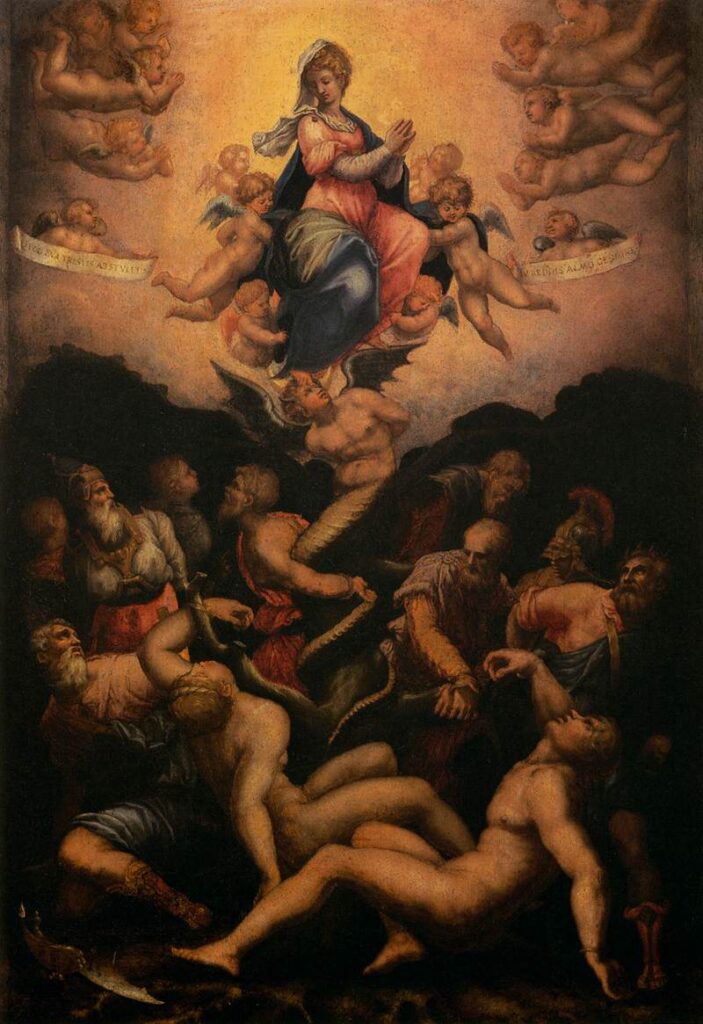
| Completed Year | 1567 |
| Dimensions | 66 x 50 inches |
| Location | Galleria degli Uffizi, Florence |
Giorgio Vasari paints a visual hymn to the Virgin Mary in the “Allegory of the Immaculate Conception”. Beyond the religious significance, Vasari known for his biographical works on artists, showcases his prowess as a painter, bringing a unique perspective to this cherished theme.
8. The Procession of the Magi by Benozzo Gozzoli
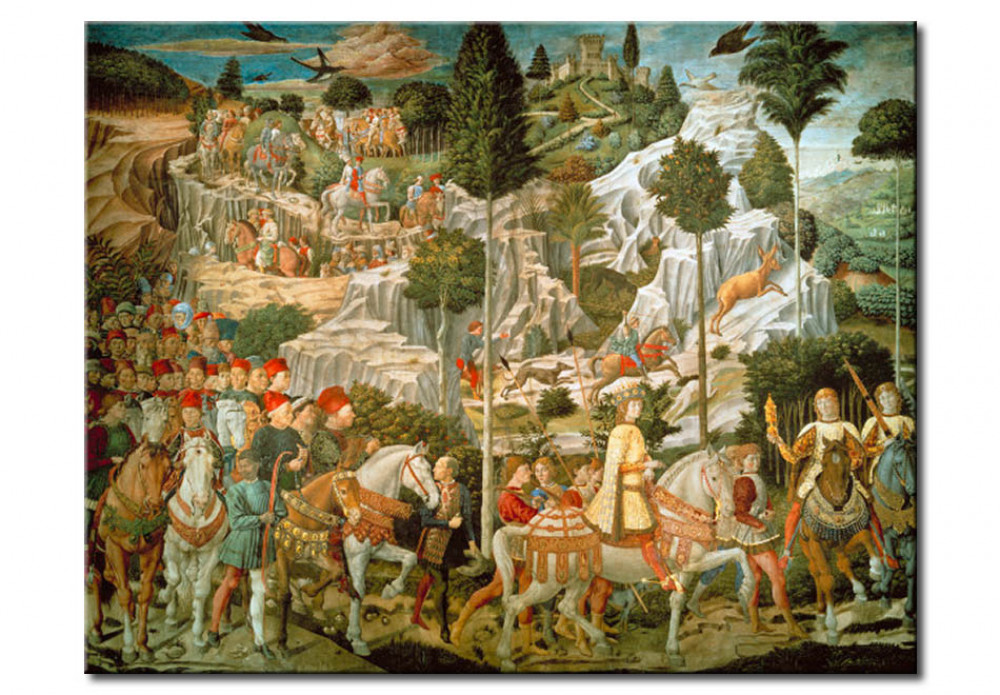
| Completed Year | 1459-1461 |
| Dimensions | 9’2″ x 10’8″ |
| Location | Palazzo Medici Riccardi, Florence |
Benozzo Gozzoli parades the Magi in a festival of colors in “The Procession of the Magi.” Those dudes on horses in the background? They’re not just extras; rumor has it they’re portraits of the Medici family, making this more than just a biblical scene—it’s a Renaissance family portrait.
9. Deposition from the Cross by Pontormo

| Completed Year | 1528 |
| Dimensions | 10 x 6 feet |
| Location | Capponi Chapel, Santa Felicita, Florence |
Pontormo‘s “Deposition from the Cross” is a theatrical portrayal of a poignant moment. As the drama unfolds, the vibrant colors might remind you of a Renaissance rave, but in reality, it’s a poignant depiction of Christ being taken down from the cross.
10. Annunciation by Lorenzo Lotto

| Completed Year | 1527 |
| Dimensions | 82 x 116 inches |
| Location | Basilica di San Paolo, Venice |
Lorenzo Lotto captures the divine announcement in “Annunciation”. The delicately painted angel’s wings are not just for show. They’re so realistic you might expect them to flutter if you stare long enough.
11. The Golden Age by Lucas Cranach the Elder

| Completed Year | 1530 |
| Dimensions | 28 x 41 inches |
| Location | Uffizi Gallery, Florence |
Lucas Cranach the Elder paints a utopian dream in “The Golden Age.” Beyond the frolicking figures, the naked people aren’t just enjoying themselves; it’s a metaphor for the Renaissance ideal of a utopian era. Renaissance symbolism at its finest.
12. Venus, Cupid, Folly, and Time by Bronzino

| Completed Year | 1546 |
| Dimensions | 77 x 63 inches |
| Location | National Gallery, London |
Bronzino throws a saucy party in “Venus, Cupid, Folly, and Time.” As you navigate this visual feast, you’ll spot a tiny hourglass—Time making a cheeky cameo at the bash, reminding us that even in the midst of revelry, time keeps ticking.
13. Feast of the Gods by Giovanni Bellini
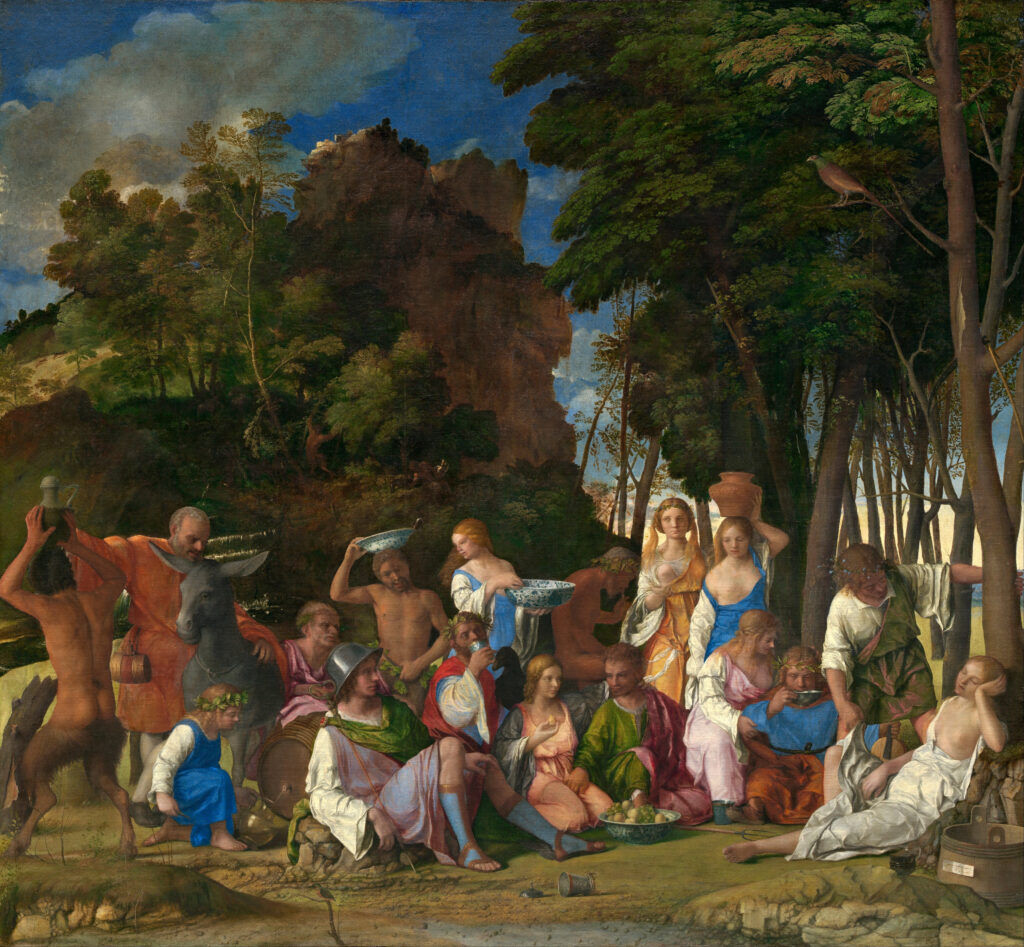
| Completed Year | 1514 |
| Dimensions | 67 x 102 inches |
| Location | National Gallery of Art, Washington, D.C. |
Giovanni Bellini lays out a visual feast in “Feast of the Gods.” The figures in the painting are not random; they are inspired by classical sculptures, a subtle nod to the Renaissance love for all things ancient.
14. The Disputation with Simon Magus and Crucifixion of St. Peter by Filippino Lippi
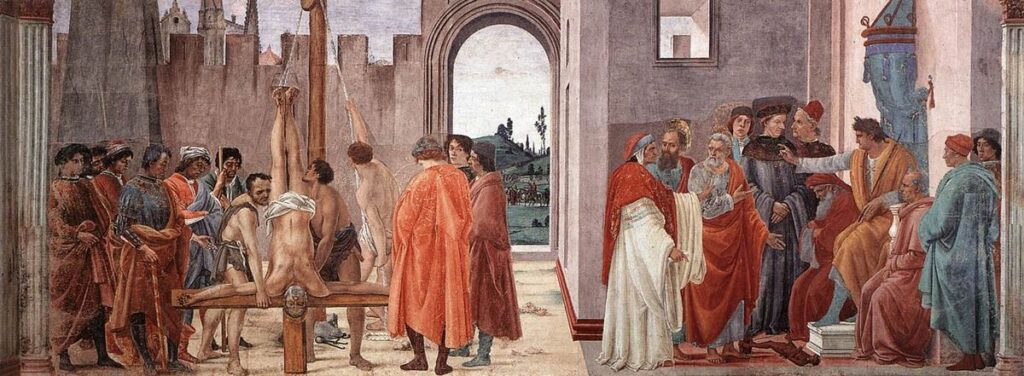
| Completed Year | 1481-1483 |
| Dimensions | 25 x 54 inches |
| Location | National Gallery, London |
Filippino Lippi dissects a religious debate in “The Disputation with Simon Magus”. This artwork is like the Renaissance version of a theological rap battle. Lippi manages to capture the intensity of religious discussions with a touch of artistic flair.
15. The Triumphs of Caesar by Andrea Mantegna

| Completed Year | 1486- Early 1500 |
| Dimensions | 10’10” x 26’7″ |
| Location | Hampton Court Palace, London |
Andrea Mantegna orchestrates a Roman triumph parade in “The Triumphs of Caesar”. Mantegna’s style is so exceptional that you might find yourself trying to pluck a laurel leaf off the canvas.
16. St. Jerome in his Study by Antonello da Messina
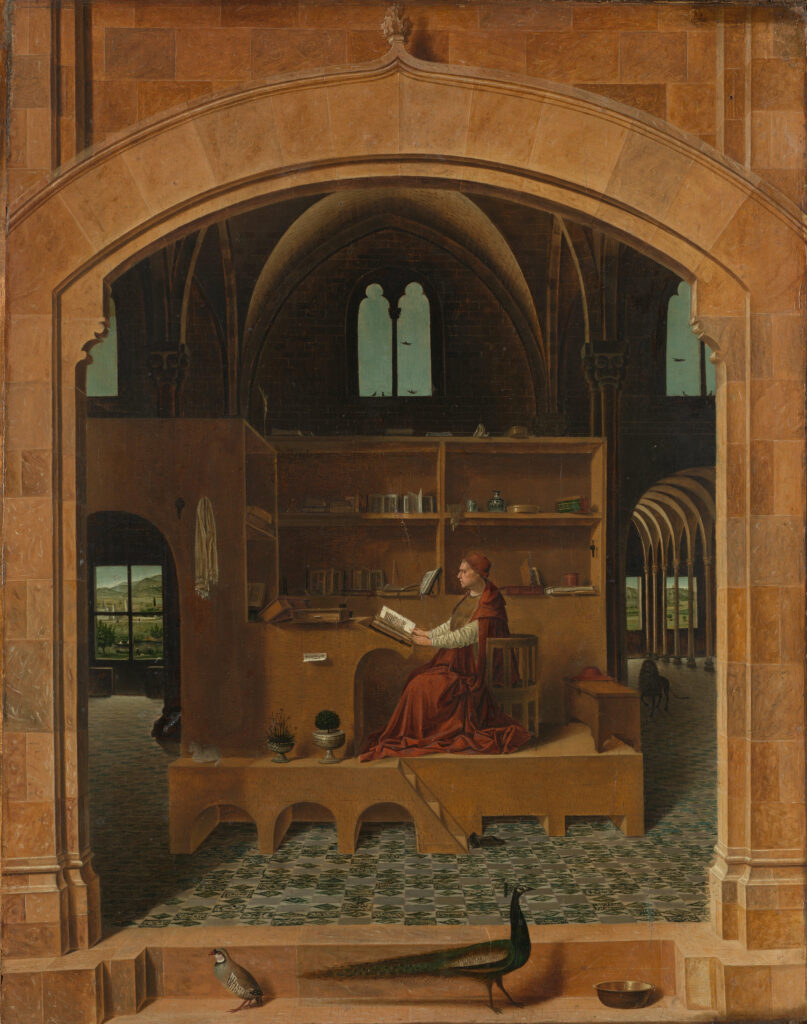
| Completed Year | 1475 |
| Dimensions | 18 x 24 inches |
| Location | National Gallery, London |
Antonello da Messina invites you into St. Jerome’s scholarly sanctuary in “St. Jerome in his Study.” The painting is now housed in the National Gallery in London..
Frequently Asked Questions
What was the most famous painting of the Renaissance?
The Last Supper and Mona Lisa by Leonardo da Vinci are two of history’s most renowned pieces of art which were painted during the Renaissance.
Who were the 4 famous painters of the Renaissance?
The four primary Renaissance painters were Leonardo Da Vinci, Raphael, Michelangelo, and Donatello.
What are the 5 arts of the Renaissance period?
The artwork created in the 14th, 15th, and 16th centuries including painting, sculpture, architecture, music, and literature are considered as the 5 arts of the Renaissance period
Conclusion
There you have it—an extended exploration of the quirky, dramatic, and awe-inspiring world of famous renaissance paintings. Each painting is a chapter in the grand narrative of human creativity, inviting you to step into the shoes of artists who dared to dream and challenged the boundaries of their time.












